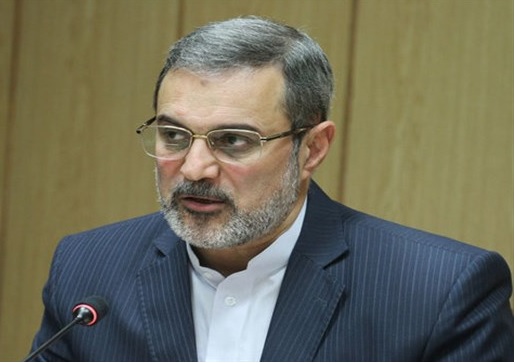
The very first question the reporter who was sitting face-to-face with me to conduct the 30-minute interview, was: “You have a grandchild who has not reached the school age. By the time your term in office comes to an end, your grandchild will most probably be old enough to attend school. What would you like to be the heritage you leave behind in Iran’s education system to later recount to your grandchild as the most important achievement of your tenure of service?
A part of my answer to this question was immediately as follows: “My unwritten goal is to turn schools in this country into a very joyful and lively environment for the children of this nation. This is the most important index of the education system’s success.”
I also went on to express hope that there would come a day when Iranian children enter their schools enthusiastically and willingly and leave there sadly yearning to go back there soon.
The next day, when I was attending a ceremony at the 36th Fajr International Film Festival (Fiff), addressing a reporter who had asked me a question about my opinion on the status and importance of promoting art in Iranian schools, I stressed that perhaps among the reasons we feel that liveliness and vivacity in the country’s schools are inadequate, the education environment is too inflexible and serious and that Iranian students are not satisfied with being in their schools, is us consigning art, beauty and a sense of Aesthetics to oblivion.
On that day, unfortunately, I acknowledged that art is somehow missing in the atmosphere and environment of our schools. I optimistically promised that the main policy of the Education Ministry in the Rouhani administration is to make up for this shortcoming.
The plan titled ‘7th Bell’ was among the sections held on the sidelines of this year’s Fiff. As per this scheme, a total of 20,000 students attended seven Iranian Cineplexes and watched their movies appropriate for the age group. This, per se, was a manifestation of taking the first steps in this path. A path which will be built gradually to, with art’s assistance, eject over seriousness and inflexibility from Iranian schools on one hand, and gift liveliness and vivacity to the people of this country on the other. No doubt, threading such a path will help increase the number of Iranian students’ social and metacognitive skills and will unearth their aesthetic talent, which is among the six axis and areas of education paid full attention to and stipulated in the Fundamental Reform Document of Education (FRDE) of the Islamic Republic of Iran.
Some parts of this skills training and fostering talent should be added to the agenda of schools. Other parts should be pursued in the activities of students which are carried out in cultural centers, including cinemas, theater halls, museums, cultural centers, cultural expos, camps and festivals.
Earlier, we held a very good session with the board of director of the theater house which agreed to help the Education Ministry teach theater in schools.
Reconciliation of schools with artistic and cultural activities, establishing a descriptive evolutional system instead of grading, removing stress and pressure of tests, banning the spread of tuition books and banning Nowrooz homework and replacing it with storytelling are parts of a puzzle which will ultimately depict an appealing and encouraging perspective.
Nonetheless, I stress that the way is not prepared for the Education Ministry to achieve these promising goals. This is because the ministry is dealing with a lot of shortcomings in manpower, budge, facilities as well as resistance against change.
We expect that at least uninformed and irresponsible individuals and institutes do not throw a monkey wrench in the training and educational affairs with unproductive measures if they cannot help us achieve our goals.
*Mohammad Bat'haei is the Iranian minister of education.

Add new comment